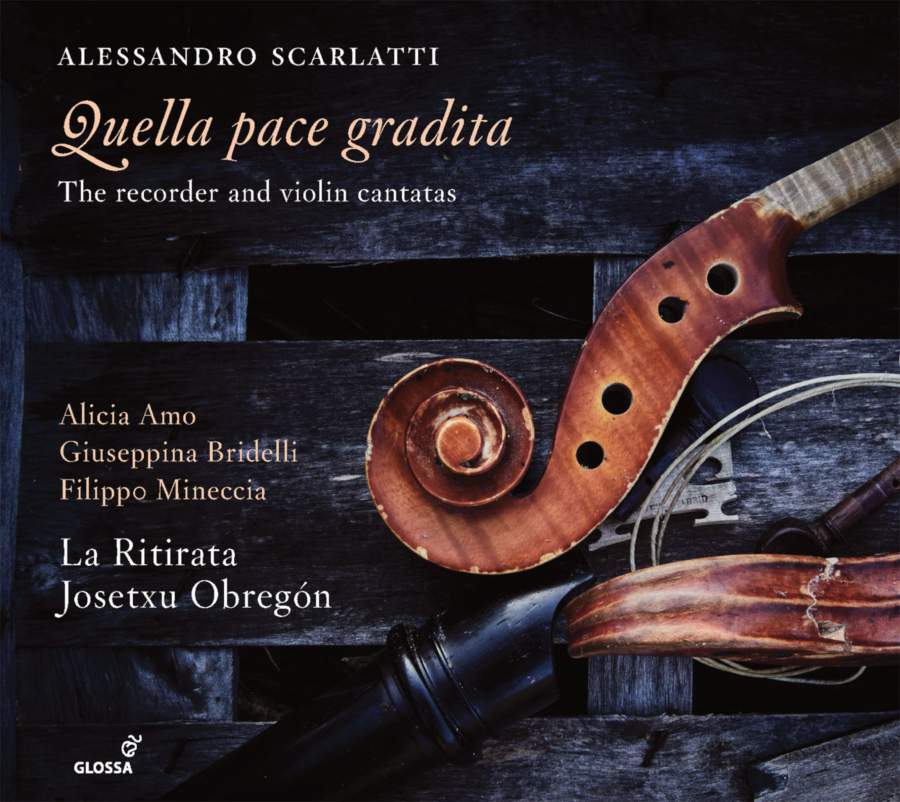Among the many glories that contribute to the extraordinary complex that is Versailles, few emulate the classical grandeur of its Chapelle Royale. Built for Louis XIV by the great architect Jules Hardouin-Mansart between 1689 and 1710, during the course if the 18th century it would witness ceremonial that included royal weddings and the singing of grandiose Te Deums to celebrate military victories and royal births. Today, along with the later 18th-century opera house, it forms the most important venue for the musical promotions of Versailles Spectacles, the management arm of all public events mounted at Versailles. During the course of an interview I conducted recently with Laurent Brunner, its highly cultivated director, Brunner readily recognised how fortunate he is to be in the unique position of having two such magnificent and complimentary historic buildings at his disposal, one for opera and concerts, the other for sacred music. The Chapelle Royale currently plays host to some 30 concerts annually and while they are spread throughout the year the principal concentration is on the two major church festivals of Christmas and Easter.
In 2019 the period leading up to Easter (March 31 to 20 April) featured seven events, including both Bach Passions. During the course of Holy Week itself, Jordi Savall directed a performance of the St Matthew Passion, while Good Friday and Holy Saturday brought respectively the Pergolesi Stabat Mater and Leçons de Ténebrès by both Couperin and Lully’s father-in-law, Michel Lambert. It was these last two days that I was able to attend, an interesting feature of which was the placing of the major works within some kind of context. Most surprising – and indeed for some in the audience disconcerting – was the framing of Pergolesi’s bitter-sweet Stabat Mater with a lively, not to say raucous Neapolitan tarantella, albeit with a Marian text that makes mention of the Thursday of Holy Week. It was preceded by a plainsong intonation of the 13th century Stabat Mater hymn, the tarantella heard initially off-stage then in lively procession by the forces of Le Poème Harmonique under their director Vincent Dumestre. Such practice was very much a part of Neapolitan life, where festivals mingled sacred topics with profane street life to a degree unknown in the West today. Two further plainsong settings and a rather brusquely played Concerto in F minor by Francesco Durante led to the Pergolesi Stabat Mater, sung by soprano Sophie Juncker and mezzo Eva Zaïcik. It was a performance characterised by a considerably more dramatic approach than the juxtaposition of painful dissonance and sensual comfort more often encountered in the work. It made for an intriguing comparison with more conventional, lyrical performances, but although both singers were fully engaged and in general sang well – though ornamentation was poorly articulated – the overall effect was closer to secular drama, Juncker, in particular, bringing such inappropriate intensity to a verse such as ‘Vidit suum’ as to produce something close to screaming. Interestingly, the performers had obviously focussed on the duet ‘Fac ut portem’ (Make me bear Christ’s death) as the heart of the work.
Dumestre and Juncker, along with a continuo group from Le Poème Harmonique, returned the following evening for the first of two concerts featuring music for the service of Tenebrae, which formed Matins and Lauds for the final three days of Holy Week. During the latter part of the 17th century leçons de ténebrès, settings of texts from the Lamentations of Jeremiah became popular in France, attaining the status of a genre in themselves. Couperin’s extant leçons relate only to the three he composed for Thursday. The most distinctive feature of Tenebrae services was the dramatic and potently symbolic gradual extinguishing of the candles that lit the chapel, a format followed by the Versailles performance, though here the ceremonial took place during the performance of a Miserere by Clérambault added after the Couperin, a long setting for vocal trio (SSMez-S) that after an impressive dissonant opening was too lengthy a supplement to the Couperin. It did, too, seem rather pointless that following the extinction of the final candle the moment of black contemplation was almost immediately dissipated by the full restoration of the chapel lighting, thus inducing a wave of inappropriate applause. Returning to the Couperin, many readers will doubtless have come to know these supremely lovely settings through the famous 1977 recording made by Emma Kirkby and Judith Nelson. The present performance, again set within the context of plainsong (by Gabriel Nivers), brought something very different. As with the Pergolesi, Dumestre seemed determined to seek unwonted drama in the music, inspiring Juncker and second soprano Claire Lefilliâtre to performances that completely lacked the chaste, serene purity of Kirkby and Nelson. Given that this is music written for a nunnery the approach of the latter is surely closer to authentic style, however good the singing of the French sopranos?
For the succeeding late concert, a smaller audience was ushered into the balcony to surround the organ for a set of unknown leçons de ténebrès for the third day by Michel Lambert, today known for his airs de cour, songs that would have a considerable influence on Lully’s operatic airs. Originally composed for three voices and continuo, they were given here in a solo version prepared and sung by the baritone Marc Mauillon. Once again these deeply felt pieces were sung within a plainsong context. Initially it seemed that Mauillon’s grainy, imprecise singing would create a barrier between music and listener, but in fact he improved considerably both tonally and in security of pitch, ultimately producing some of the most affecting and idiomatic singing over the two days, days that, despite reservations, provided an intensely moving experience much enhanced by the supreme Baroque splendour and dignity of the surroundings.
Brian Robins





